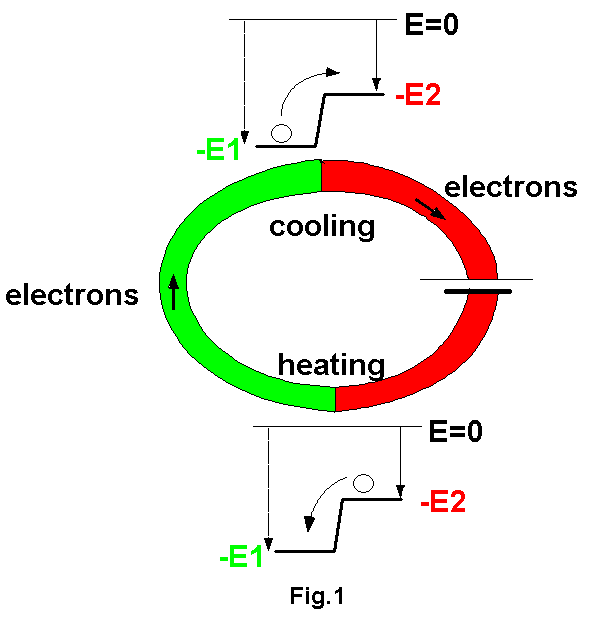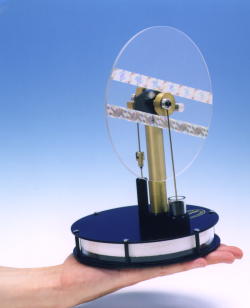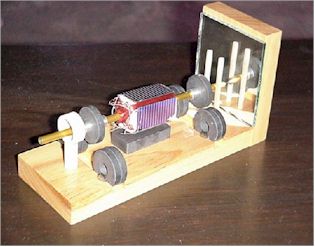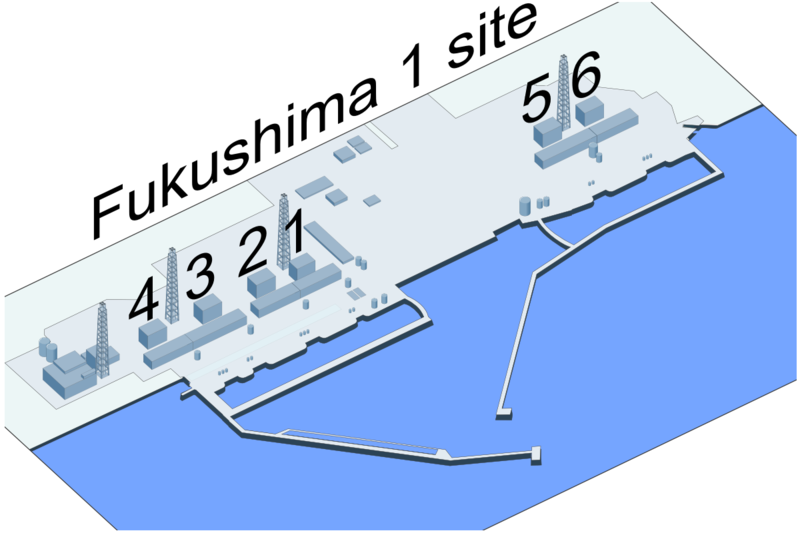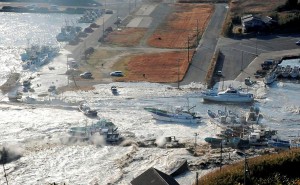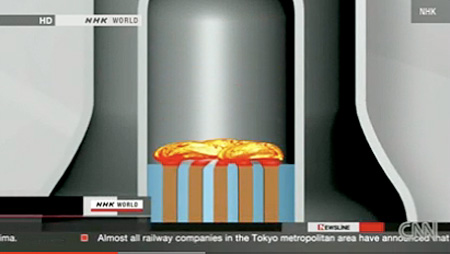Even though I was late for Mr. Tom Vale’s presentation I had the chance to see some of the tools he was using to show how electricity is conducted. The only experiment I was able to see was the florescent light bulb the he put close to an instrument that replicate a Tesla Coil. The bulb was thiner on one half and due to this availability of space, the particles inside the bulb would react by showing off two different colors on each half of the bulb. Mr. Tom Vales talked about the following topics that I am going describe based on some research:
1) The Peltier Junction:
When we think of Peltier effect we refer to the cooling of one joint and the heating of the other. When a flow of electric charge is kept in a circuit of two different conductors, and the effect can be even stronger in circuits with different semiconductors. Peltier found that junctions of different metals could be heated or cooled, depending on which direction an electrical current passed through them. If the electrical current was to be reversed, heat would be absorbed.
Here we have an example of the Peltier effect: consider the circuit shown here. Under these conditions it is observed, as indicated in the picture above, that the right-hand junction is heated, showing that electrical energy is being transformed into heat energy (where the black arrow on the heat side is). Meanwhile, heat energy is transformed into electrical energy at the left junction, thereby causing it to be cooled. When the current is reversed, heat is absorbed at the right junction and produced at the left one.
2) The Stirling Engine:
The Stirling engine was invented by Robert Stirling back in 1816. It has the potential to be much more efficient than a diesel or gasoline engine. However, there hasn’t been a mass market boom for the Stirling engine. Its uses, rely mostly in very specialized applications such as in submarines or auxiliary power generators for yatchs, because they require silent operations.
According to howstuffworks.com ”A Stirling engine uses the Stirling cycle, which is unlike the cycles used in internal-combustion engines. The gasses used inside a Stirling engine never leave the engine. There are no exhaust valves that vent high-pressure gasses, as in a gasoline or diesel engine, and there are no explosions taking place. Because of this, Stirling engines are very quiet.The Stirling cycle uses an external heat source, which could be anything from gasoline to solar energy to the heat produced by decaying plants. No combustion takes place inside the cylinders of the engine”. I particularly like loud stuff when it comes to motors, but for those vehicles that are made to be silent, their best choice is to have a Stirling engine.
3) The Mendocino Motor:
Even though I missed the description of this one, I had the opportunity to actually see a Mendocino Motor. Thanks to solar energy, the motor would keep moving a small generator that needed a little spin at first, but then would rotate non stop (until light would be blocked).
Fortunately, I found a picture of the Mendocino Motor that Mr. Vales has. It is on his website:
The Mendocino motor’s base has 5 sets of magnets. 4 Magnets are located in the base that provide a levitation force against the magnet in the rod. The 5th one, provides the magnetic field for the rotor. According to stelmos-fire.com ”The rotor consists of a shaft with a point on one end, magnets and rotor block. On the rotor block, there are four solar cells; one cell on each of the four sides and two sets of windings”. It works in the following way: The rotor is levitated (as described before with the magnets) and it provides a forward thrust to maintain the pole’s point against the plate. When the light hits the solar cells, it generates an electric current that energizes the rotor. What causes the rotor to turn is the creation of an electromagnetic field that reacts with the magnets in the base. So when the rotor turns, it gives the chance to another cell to get energy, creating the process simultaneous.
4) Tesla Coil:
What I heard the most when I came in the classroom was Mr. Vales talking a lot about Nikola Tesla and his inventions, specially the Tesla Coil. The Tesla Coil is one of Nikola’s most famous inventions. It is a high-frequency air-core transformer. Accoring to teslasociety.com ”It takes the output from a 120vAC to several kilovolt transformer & driver circuit and steps it up to an extremely high voltage. Voltages can get to be well above 1,000,000 volts and are discharged in the form of electrical arcs.” I am very glad I had a chance to actually see Mr. Vales turn that coil on and see how the electricity would come out the peak of the coil, like a lot of lightnings going on, and in fact the create extremely powerful.
Sources:
http://stelmos-fire.com/mendocinomotor.html
http://www.daviddarling.info/encyclopedia/P/Peltier_effect.html
http://www.howstuffworks.com/stirling-engine.htm
